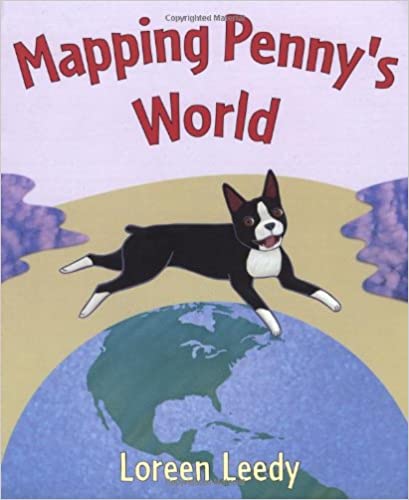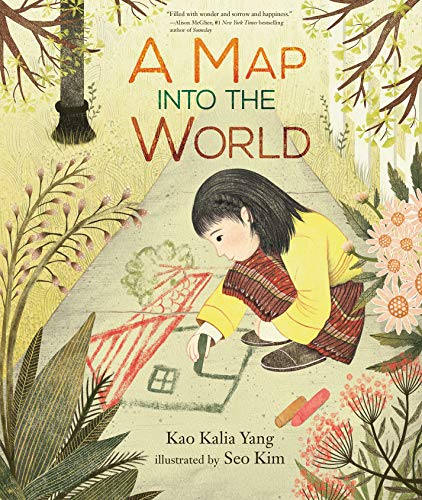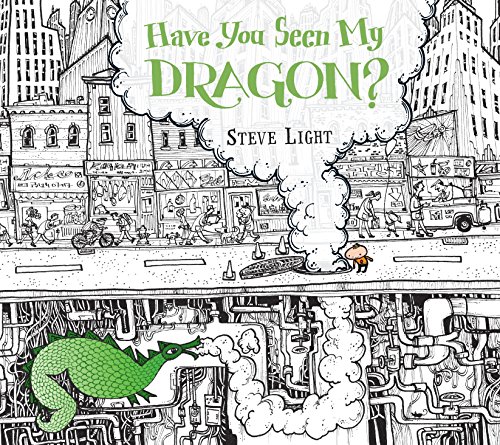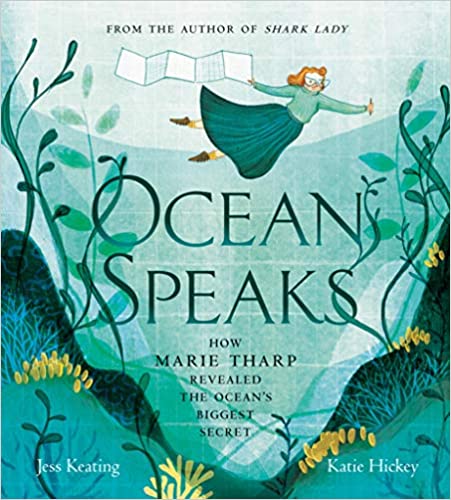
Maps promise adventure! They not only provide a way to understand geography, but also history, politics, and self-awareness. In a 2013 study, National Geographic concluded: “A student who has acquired robust spatial thinking skills is at an advantage in our increasingly global and technical society.” White it’s easy to ask Siri for directions, learning how to map read builds important spatial skills. The same skills that help build confidence in geometry, engineering, construction, design, art, and more.
The following picture books offer a way to introduce map skills via story, which is the very best way to learn everything.
MAPPING PENNY’S WORLD by Loreen Leedy

For core map concepts, this is a great place to start! When Lisa’s class is tasked to make a map, she starts with her room. Then Lisa begins mapping from her dog Penny’s perspective. Readers learn some basics about map reading, like how to incorporate scale and how to use a key to the symbols. Best of all, the inviting illustrations provide a simple, colorful model for students to create their own maps.
IDEA: Take a moment to map your corner of the world. Include a scale measurement and a key to the symbols. You may find it easier to include details if you start with a more immediate space.
A MAP INTO WORLD by Kao Kalia Yang & Seo Kim

This story chronicles a year of changes in the life of a Hmong girl named Paj Ntaub and her family. It hints at their journey to America and focuses on a special relationship they develop with an older neighbor. Based on a true story, it’s a heartfelt fictional tale about change, place, and loss. But it also contains interesting visual elements that offer the reader to consider their own sense of place. There’s a story cloth that tells an immigration story, and, at the close of the book, there’s a sidewalk drawing that timelines the year. (Youtube read-aloud: https://www.youtube.com/watch?v=cgPEZcfAcY4)
IDEA: Have students create a story cloth, map or timeline noting their own geographical journey or their family’s history and immigration.
HAVE YOU SEEN MY DRAGON? by Steve Light

This whimsical book engages directional skills when a boy searches the city for his special dragon. Along with a wonderful map in the end pages, readers can also practice counting to 20 through spot-color illustrations. Use it for a quick introduction to a mapping concept or offer a longer study of the pictures. Author/illustrator Steve Light provides insights into illustration details as he reads via this link: https://www.youtube.com/watch?v=6OFBI1KM8Bs, so it’s almost like having him visit your storytime.
IDEA: Make or find a map of your city/town and invite students to mark their own path or a path they’d like to follow. Try www.openstreetmap.org to find your neighborhood.
OCEAN SPEAKS by Jess Keating and Katie Hickley

Meet Maria Tharp! This trailblazing female scientist mapped the ocean floor. Find out how her childhood passion became a successful career at a time when women were not encouraged to study science. Plus, you’ll see a map of the Mid-Atlantic Ridge. What I love about this Youtube read aloud by Dr. Maureen Raymo is that she’s an oceanographer; Jess Keating, the author, is a zoologist; and they’re all celebrating Maria Tharp, who was a geologist: https://www.youtube.com/watch?v=387SowEp18w.
IDEA: Take a moment to map a place you love in nature. It might be drawing your own backyard garden, local park, or maybe you’ll take a field trip to special place in nature.
FOLLOW THAT MAP by Scot Ritchie

We’ll end with another great, general picture book that talks about mapping skills, including a compass rose, landmarks, scale bar, routes, keys, and legends. In the story, friends set out on an adventure close to home, and then the adventure grows to include a map of the world and outer space. Full of colorful illustrations, there’s even a set of directions at the close to help readers draw a simple map, making it a great book to use in a station or to read as a class.
IDEA: Send your kiddos on a treasure hunt with a map you make just for this occasion. Or have students create treasure maps for each other. Need some treasure? Try making your own map necklaces with cardboard, maps, glue, and yarn: https://www.littlepassports.com/craft-diy/map-landmark-pendant-craft/.
More Ideas…
If you have a favorite mapping book, please do send it our way (lisa.morlock@drake.edu). We’d love to share your ideas with readers. And if you need more on mapping, try the organization that has sponsored a number of the world’s explorers and map makers: National Geographic’s classroom resource site: https://www.nationalgeographic.org/education/map-skills-elementary-students/.
If you’re seeking more STEM resources, please visit Iowa STEM’s Teachable Moment page: https://iowastem.gov/teachablemoment